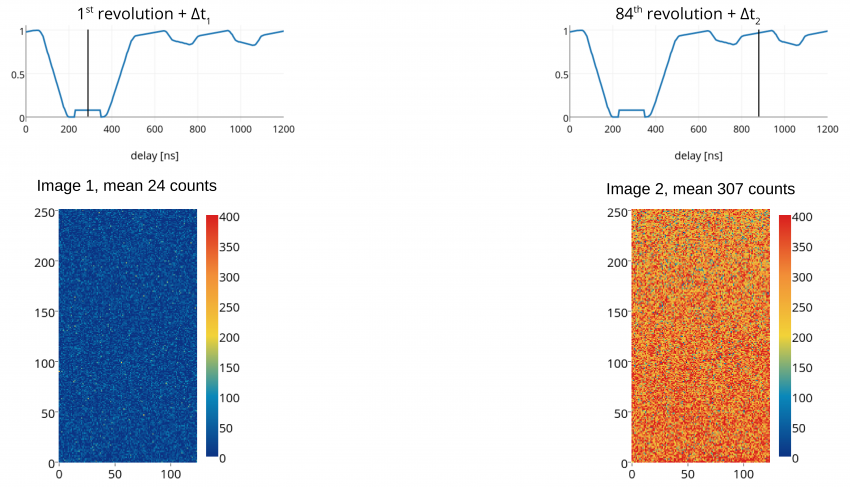In a time resolved pump-probe experiment, the sample is excited with an ultra-short laser pulse (the pump), and induced changes in its atomic structure are studied by measuring, with a 2-D pixel detector and a precisely controlled delay, a diffraction pattern from a single pulse of synchrotron radiation (the probe). Such an experimental set-up has been successfully developed and is in use on the CRISTAL hard X-ray diffraction beamline. The Detector Group, together with the CRISTAL beamline, proposes an improvement to this classical scheme, by probing the sample’s response at two different delays after each laser excitation. The first measurement at short delays allows studying the photo-induced dynamics. The second one is a reference measurement taken after sample’s relaxation, which permits detection and the compensation of drifts in the experimental conditions (e.g. beam misalignment, sample degradation, …). For this purpose, a detector prototype designed by AGH-UST (Krakow, Poland), has been extensively tested on the METROLOGIE and CRISTAL beamlines.
The prototype detector is a hybrid pixel sensor, that operates in a single photon counting mode (Figure 1). The readout chip is characterized by a very fast front-end (85 ns dead time), a low noise performance (123 e-) and a tunable gain. The pixel matrix is arranged in 256 rows of 128 pixels each, and the pixel size is 75 µm × 75 µm. Moreover, each pixel features two independent discriminators and two 14-bit counters.

Figure 1: Hybrid pixel concept (left) and schematic of the single readout pixel (right).
During the measurements on the beamlines, the storage ring-filling mode known as "hybrid" was used, i.e. with an isolated electron bunch in the middle of one empty quarter of the storage ring, and a multi-bunch section spread over the remaining three quarters. Symmetrical time gaps between the isolated bunch and the uniform sections are of 147.64 ns. During these tests, 2 bits from all pixel counters were read out at 11.8 kHz. With a gate opening time as short as 120 ns the detector demonstrated its capability for precise isolation of a single photon bunch with a temporal response uniformity of 50 ns (Figure 2). Despite the decrease in detector counts, due to pile-up effects, in the multi-bunch regions at high photons fluxes (above 108 photons per second and per mm2), no significant difference is observed in the single bunch region. Therefore, this measurement demonstrates that this detector prototype can be used for time-resolved experiments at very high photon flux.

Figure 2: The hybrid filling mode of the SOLEIL storage ring measured with the hybrid pixel sensor prototype and calculated from the actual machine current values per bunch (left). The same profile measured at different beam intensity (right, the measured intensity is corrected for attenuation, the drop in the uniform filling region is due to pile-up).
Additionally, the feasibility of pump and probe-probe experiments with this detector has been demonstrated by a series of images taken in the same acquisition with two different probing delays (Figure 3). The first one is synchronized with the single bunch and the second one with bunches that are on the opposite side of the storage ring. The measured ratio of the mean signal on both images matches very well the expected value.

Figure 3: Two images accumulated in the pump-probe-probe scheme with the same temporal gate opening at the delay that corresponds to the single bunch (left) and at the delay that corresponds to the bunches that are opposite in the storage ring (right).
After these successful tests, SOLEIL's Detectors Group is now developing a small-size camera dedicated to time-resolved studies in collaboration with AGH-University of Krakow.
